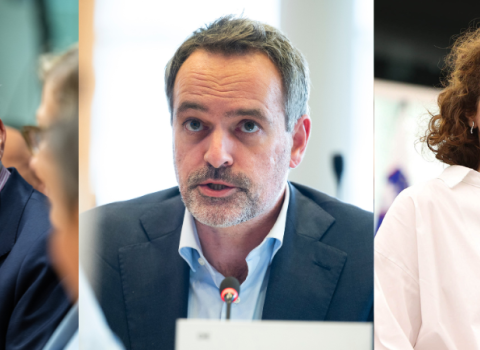Measures that aim to close Europe’s research gap must be used to fund science, says University of Tartu professor

Toivo Maimets, professor and chair of cell biology at the University of Tartu in Estonia. Photo: Andres Tennus
In many Widening countries, researchers lack funding to build research labs and research groups. Even when young people wish to come back to their home country, there aren’t enough career possibilities. Horizon Europe and its successor, FP10, could help by offering more than just networking opportunities through the Widening measures, such as grants to start small-scale collaborations.
The aim of Widening measures, as defined in Horizon Europe Work Programme 2023-2025, is to tackle the innovation divide and move to a more integrated and cohesive European research and innovation system. “Research and innovation policy can only ensure excellence at the European level if every country and region progresses,” it says.
And while funding and participation of Widening countries has increased in recent years, the innovation gap is growing, because the leaders are moving faster than the rest. As the European Innovation Scoreboard 2023 shows, the difference in performance within the group of emerging innovators has not narrowed and they are not catching with the next group, the moderate innovators.
To make a true difference, Widening measures should no longer mainly deal with institutional capacity building and developing international research networks, but focus on supporting top level researchers and research cooperation. This will lead to an increase in participation in all parts of Horizon Europe, and in FP10.
There is a lot of talent in the Widening countries. These talented individuals do not just need “access to excellence”, but the opportunity to improve their performance as scientists. This will strengthen institutions and countries in turn. Scientists must be empowered to increase their own capabilities as researchers and leaders. We need to make better use of Europe’s entire talent pool.
Better connected
Another area where there is room to improve Widening measures would be in speeding up strategic change at national and institutional levels. To do this, Widening should be used to promote excellent research and innovation cooperation, be better connected to other parts of the framework research programme, and have co-financing from other sources, such as Cohesion policy funds.
In addition, the definition of participation should be changed so that ‘increasing participation’ should no longer mean active participation and success only in Widening measures, but involving the best Widening target group competencies in all parts of the framework programme, including taking a leading role in important research and innovation challenges in the region or in a particular field.
Looking forward t FP10, due to begin in 2028, Widening measures must be continued. It is true that some Widening instruments have worked better than others, and we should address this, but there is still a clear need for EU level support to close the research and innovation gap and improve cohesion in Europe.
The discussion should not focus on excellence versus Widening. On the contrary, researchers from Widening countries that I work with through the Alliance4Life consortium or my colleagues from the Guild of European Research Intensive Universities, agree that we need to defend the excellence principle in the EU’s framework programmes.
The only way to maintain the programme’s scientific leadership in research and innovation is by supporting the best talent. Widening actions can help to boost success in European Research Council grants as a key benchmark of scientific quality.
Alliance4Life’s recent survey on the use of Widening instruments in top EU-13 biomedical research institutes indicated many positive impacts. These included improved scientific cooperation, better grant writing skills and administrative capacity, increased mobility of researchers, and the ability to attract top scientists from abroad. Many universities involved in the survey emphasised changes to a more internationally open research culture because of involvement in widening projects.
Estonia, by way of example, has been very successful in ERA Chairs applications, with seven chairs established at the University of Tartu. Last year we also opened two Teaming centres of excellence in bioengineering and personalised medicine. In Estonia, 80% of public research funding is competitive and that is why research group leaders are motivated to apply for framework programme funding.
This shows Widening measures are working, but not fast enough or well enough.
For FP10, we must make sure the instruments are more focused and aligned with the needs of the Widening countries and the whole European Research Area. Given the competitiveness of global science, we cannot afford the potential of science to be underdeveloped in many parts of the EU. And we must avoid a two-speed European science.
In the long run, the success of Widening will be when these measures are no longer required. One by one, countries will considerably improve their performance and move out of the Widening group. It will take some time and much work, but eventually there will be an integrated and cohesive European research and innovation ecosystem in the EU.





 A unique international forum for public research organisations and companies to connect their external engagement with strategic interests around their R&D system.
A unique international forum for public research organisations and companies to connect their external engagement with strategic interests around their R&D system.